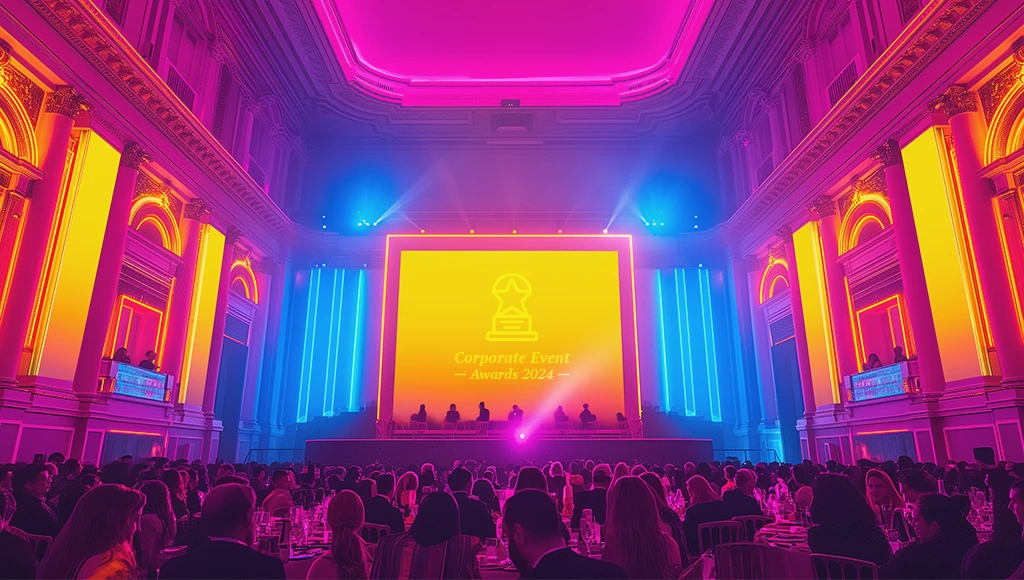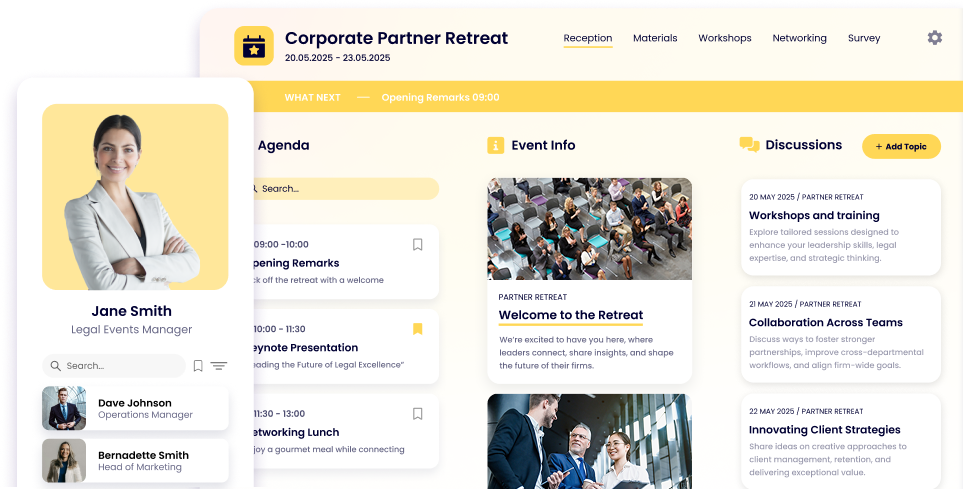17 Essential Steps for Successful PR Event Planning: A Comprehensive Guide

Lisa Broom | Head of Marketing

Want to put together a successful PR event? Of course you do. With the right features in place, these can be a major building block to establishing and building your brand. To keep everything straight and running smoothly, you need a step-by-step process.
Don’t worry. We can help.
Our guide walks you through the key steps to ensure your event is a triumph, blending creativity, strategy, and technology to make your vision come alive.
Key Takeaways
- Understand the importance of clear objectives in PR event planning.
- Identify your target audience for tailored engagement.
- Utilize technology and tools to streamline planning and execution.
- Foster partnerships with sponsors for enhanced reach.
- Leverage feedback for continuous improvement.
What Is PR Event Planning?
PR event planning is the process of organizing and executing events that promote a brand, product, or service to the public. These events aim to create buzz, generate media coverage, and build relationships with key stakeholders. From press conferences to networking events, effective PR event planning requires strategic coordination and attention to detail.
Technology plays a pivotal role in PR event planning. From event management software that streamlines registration and logistics to social media platforms that amplify reach, technology enhances every aspect of event planning.
Tools like Fliplet offer customizable solutions that facilitate planning and execution, ensuring a seamless experience for both organizers and attendees.
Plus, virtual and hybrid events have become increasingly popular, allowing brands to engage with a global audience and provide flexible participation options. These technological advancements not only increase accessibility but also offer new ways to track and analyze event data, leading to more informed decision-making and improved outcomes.
Key Elements to Consider When Planning a PR Event

Know the “Who, What, and Why” of Your Event
Understanding the purpose of your event and who you want to reach is fundamental. This knowledge will guide all aspects of your planning, from messaging to logistics.
Ensure You Can Achieve Measurable Results from PR and Event
Utilizing a marketing app like Fliplet can help track and analyze your efforts, providing valuable insights into what works and what doesn’t. By setting clear metrics, you can evaluate the success of your event and demonstrate ROI to stakeholders.
Include ESG in Your Planning
Incorporating Environmental, Social, and Governance (ESG) considerations into your event planning can enhance your brand’s reputation and appeal to socially-conscious audiences. Think about sustainability, inclusivity, and ethical practices in your event design.
Technology Is Your Friend
Leverage event management software and apps to streamline planning and execution. From registration to feedback collection, technology can simplify processes and enhance the attendee experience. Fliplet offers solutions that can be tailored to your specific needs, ensuring a seamless event.
Types of PR Events

If you are looking for PR event examples, there are a ton to pick from. Below, we’ve highlighted some of the most important to understand.
- Press Conferences: Press conferences are crucial for delivering key announcements and updates to the media and public. They provide a platform for brands to communicate directly with journalists, offering opportunities for questions and in-depth discussions. These events are ideal for launching new initiatives, sharing important news, or responding to public concerns, ensuring that the message is clearly conveyed and accurately reported.
- Product Launches: Product launches are designed to introduce new products or services to the market, creating excitement and anticipation among potential customers and media. These events often include demonstrations, presentations, and opportunities for attendees to interact with the product firsthand. A successful product launch can generate buzz, drive sales, and establish a strong market presence from the outset.
- Networking Events: Networking events facilitate connections among industry professionals, clients, and potential partners. These gatherings create opportunities for attendees to exchange ideas, share experiences, and build valuable relationships that can lead to future collaborations and business opportunities. Networking events can be formal or informal, and often feature speakers or panels to inspire conversation and learning.
- Charity Events: Charity events align brands with social causes, showcasing their commitment to corporate social responsibility. These events can take various forms, including galas, auctions, or community service activities, and often aim to raise funds or awareness for specific causes. By hosting or participating in charity events, brands can enhance their reputation, engage with their community, and make a positive impact.
- Trade Shows and Expos: Trade shows and expos provide a platform for companies to display their products and services to a large audience of industry professionals and consumers. These events offer opportunities for brands to showcase their innovations, engage with potential customers, and gather valuable feedback. Participation in trade shows can increase brand visibility and establish a company as a leader in its industry.
- Media Tours: Media tours involve traveling to different locations to engage with various media outlets, allowing brands to reach a wider audience. These tours can include interviews, live demonstrations, and press meetings, helping to build relationships with journalists and secure media coverage across different regions. Media tours are an effective way to expand a brand’s reach and influence.
- Award Ceremonies: Award ceremonies celebrate achievements within a specific industry or community, providing recognition and prestige to recipients. These events often include presentations, speeches, and entertainment, creating a memorable experience for attendees. Hosting an award ceremony can elevate a brand’s status, foster goodwill, and highlight its commitment to excellence.
- Community Outreach Programs: Community outreach programs are designed to engage and support local communities, fostering goodwill and positive relationships. These events can include educational workshops, health fairs, or volunteer activities, allowing brands to connect with community members and demonstrate their commitment to social responsibility. Effective outreach programs can enhance a brand’s reputation and strengthen its community ties.
- VIP Events: VIP events offer exclusive experiences for key stakeholders, such as top clients, partners, or influencers. These events often feature personalized interactions, premium offerings, and unique entertainment, creating an unforgettable experience that strengthens relationships and fosters loyalty. VIP events can enhance a brand’s image and create a sense of exclusivity and prestige.
- Open Houses: Open houses invite the public to explore a brand’s offerings, such as new facilities, products, or services. These events provide an opportunity for brands to engage directly with their audience, answer questions, and build trust. Open houses are an effective way to increase brand awareness and encourage potential customers to learn more about what a brand has to offer.
- Workshops and Seminars: Workshops and seminars are educational events designed to inform and engage participants. These events often feature expert speakers, interactive sessions, and hands-on activities, providing valuable learning experiences for attendees. By hosting workshops and seminars, brands can establish themselves as thought leaders and create opportunities for knowledge sharing and collaboration.
These PR event examples should get you a clearer idea of the field and how to pull off a successful one of your own.
17 PR and Event Planning Steps

Step 1: Clarify and Align Your Objectives
Define the goals of your event and align them with your broader PR strategy. Clear objectives will guide your planning and help measure success.
Step 2: Define Your Target Audience
Identify who you want to reach and tailor your event to their preferences and interests. This will inform your messaging, activities, and overall approach.
Step 3: Develop a Realistic Budget
Create a detailed budget that covers all aspects of your event, from venue and catering to marketing and technology. A well-planned budget will help you manage resources effectively and avoid surprises.
Step 4: Create a Detailed Timeline
Outline all tasks and deadlines in a comprehensive timeline. This will ensure everyone is on the same page and that nothing is overlooked in the lead-up to the event.
Step 5: Select the Event Format
Choose a format that aligns with your objectives and audience. Consider whether a virtual, in-person, or hybrid event is the best fit.
Step 6: Choose the Perfect Venue or Platform
Select a venue or virtual platform that meets your needs and enhances the attendee experience. Consider factors like location, accessibility, and technical capabilities.
Step 7: Design the Attendee Experience
Focus on creating an engaging and memorable experience for attendees. An event app builder can help you design a customized and interactive experience that keeps participants engaged.
Step 8: Consider Partnerships with Sponsors
Collaborate with sponsors to expand your reach and add value to your event. Sponsors can provide financial support, products, or services that enhance the attendee experience.
Step 9: Organize Logistics for a Smooth Experience
Coordinate all logistical aspects, from transportation and accommodations to audio-visual equipment and signage. Ensure everything runs smoothly on the day of the event.
Step 10: Develop an Event Marketing Plan
Create a marketing strategy to promote your event and attract attendees. Utilize social media, email marketing, and other channels to reach your target audience.
Step 11: Establish an Online Presence for the Event
Create a dedicated website or landing page for your event, providing all necessary information and a platform for registration. This will serve as the hub for all event-related communications.
Step 12: Invite Media and VIPs to Boost Event Visibility
Reach out to media outlets and VIPs to generate buzz and coverage. Provide them with compelling reasons to attend and highlight the value of your event.
Step 13: Provide Food and Drinks to Enhance Attendee Satisfaction
Catering can significantly impact the attendee experience. Offer a variety of options to suit different preferences and dietary requirements.
Step 14: PR Event Management: Prepare for Any Contingencies
Anticipate potential issues and have contingency plans in place. This could include backup equipment, alternative venues, or additional staff to handle unexpected situations.
Step 15: Leverage Post-Event Momentum
Capitalize on the success of your event by continuing the conversation with attendees and stakeholders. Share highlights, photos, and testimonials to extend the impact.
Step 16: Assess Your Event’s Success for Future Planning
Evaluate your event against your objectives and metrics. Identify what worked well and areas for improvement, using this information to inform future events.
Step 17: Collect and Use Feedback for Continuous Improvement
Gather feedback from attendees and stakeholders using a data collection app. Analyze this data to gain insights and refine your approach for future events.
Technology and Tools for PR Event Planning Success

Technology is becoming an increasing element of getting your next PR event right. More and more of the industry is relying on these incredible tools that continue to develop.
A peak at the research into the PR event world shows just how true this is:
- 75% of Event Planners Use Event Management Software: (Mordor Intelligence) (IMARC).
- 84% of Marketers Rely on Social Media for Event Promotion: (Eventcube).
- 67% Increase in Attendance Through Live Streaming: (Mordor Intelligence).
- 82% of Event Professionals View Engagement as a Crucial KPI: (Eventcube).
- Event Technology Can Reduce Costs by Up to 30%: (Agorify).
Let’s take a look at the ways you can integrate technology into your next PR event.
PR Event Management Software
Leverage software like Fliplet to streamline planning and execution. These tools can help you manage registrations, track attendees, and analyze event data.
Social Media Integration
Integrate social media into your event strategy to engage with attendees and amplify your reach. Use platforms like Twitter and Instagram to share updates and interact with your audience in real-time.
Live Streaming Options
Offer live streaming to reach a wider audience and increase accessibility. This can be particularly effective for hybrid events, allowing those who can’t attend in person to participate virtually.
Feedback and Analytics Tools
Utilize feedback and analytics tools to assess the success of your event and gather insights for future planning. These tools can provide valuable data on attendee engagement and satisfaction.
What Metrics Should Be Used to Evaluate the Success of a PR Event?

Key metrics to evaluate the success of your PR event include:
- Attendance Numbers: Compare against your target to gauge interest and reach. In a way, this helps to gauge the PR for events that you’re doing.
- Media Coverage: Assess the quantity and quality of media mentions and articles. Again, this is a PR for events metric.
- Social Media Engagement: Measure likes, shares, comments, and hashtag usage.
- Attendee Feedback: Gather insights on the attendee experience and satisfaction.
- ROI: Evaluate the return on investment in terms of sales, leads, and brand exposure.
For more detailed checklists and strategies, explore corporate event planning blogs like the one from Fliplet, which offers valuable insights on key metrics and best practices. Check out a couple to get started:
- Corporate Event Planning: The Ultimate Guide (Free Checklist)
- How Technology Boosts Corporate Event Planning
Successful PR Event Planning and Management Examples
Explore successful examples of PR event planning and management for inspiration and insights. Case studies can provide valuable lessons and highlight innovative approaches that you can apply to your events.
How to Involve People and Media in a PR Event?
You need to know how to do PR for an event, especially when it is a PR event.
- Create Compelling Content: Share engaging content that captures attention and encourages sharing.
- Leverage Influencers: Partner with influencers to reach a wider audience and build credibility.
- Engage with Media: Provide media with exclusive content and access to enhance coverage.
- Offer Incentives: Encourage participation through incentives like discounts, giveaways, or exclusive access.
Now You’re Ready to Create an Amazing PR Event!
With these steps and tools at your disposal, you’re well-equipped to plan and execute successful PR and event planning.
Remember, the key is to stay focused on your objectives and adapt your approach to meet the needs of your audience. With the right PR plan for an event, with each step clearly laid out, your entire organization will be able to assist you in making the day a massive success.
For more information and resources, visit Fliplet.com and explore our range of solutions designed to enhance your event planning experience.
FAQs
What are the key steps in PR event planning?
Key steps include defining objectives, identifying the target audience, developing a budget, creating a timeline, and selecting a venue or platform.
Why is setting clear objectives important in PR event planning?
Clear objectives guide your planning and help measure success, ensuring your event aligns with your broader PR strategy.
How do I choose the right venue for my PR event?
Consider factors like location, accessibility, capacity, and technical capabilities when selecting a venue.
What should be included in an event timeline?
Include all tasks and deadlines, from initial planning to post-event follow-up, to ensure a smooth process.
How important is it to have a marketing strategy for a PR event?
A marketing strategy is crucial for attracting attendees and generating buzz, ensuring your event reaches its target audience effectively.





